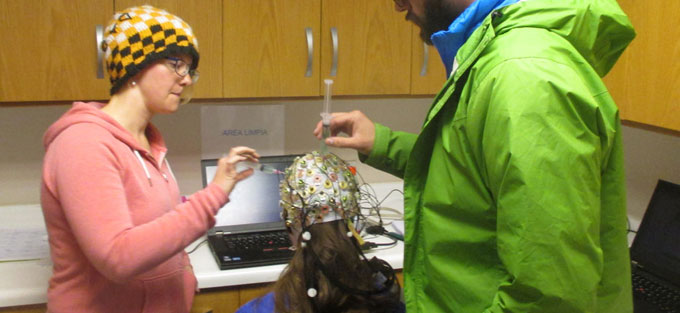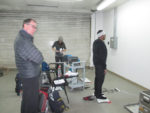Researchers at ALMA study the effects of working at high altitude
An international team of doctors and researchers conducted a study at the Atacama Large Millimeter/submillimeter Array (ALMA) to identify the consequences of working at high altitude where the body can experience oxygen deficiency, a medical condition known as hypoxia. The extreme altitude of the observatory -- 2,900 meters at the Operations Support Facility (OSF) and the Array Operations Site (AOS) at 5,000 meters -- makes it a natural laboratory for this type of research, which is extremely useful to both ALMA and other operations at high altitudes. The first results of these studies are being made available to the scientific community (see posters) and will soon be published.
Canadian, Swiss, and Chilean experts met at ALMA in April 2016 to examine workers who volunteered for the study, separating those who suffer from chronic illnesses such as hypertension or obesity from healthy workers in order to compare and understand the effects of hypoxia. Over the course of six weeks, doctors examined their cognitive skills, sleep quality, breathing patterns, blood flow to the brain, and hemodynamic changes between the heart and lungs.
For Dr. Marc Poulin from the University of Calgary, Canada, who forms part of this study, “The working conditions at ALMA are ideal for our research. It has high quality infrastructure and is a true natural laboratory due to its high altitude.”
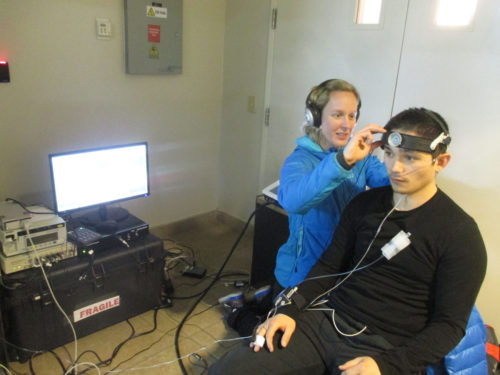
An international team of doctors and researchers conducted a study at ALMA to identify the consequences of working at high altitude where the body can experience oxygen deficiency, a medical condition known as hypoxia. The extreme altitude of the observatory -- 2,900 meters at the OSF and the AOS at 5,000 meters -- makes it a natural laboratory for this type of research, which is extremely useful to both ALMA and other operations at high altitudes. Credit: Iván López - ALMA (NRAO/NAOJ/ESO)
Most of the workers at the observatory live in cities located at low altitudes, and work 8x6 shifts (8 days of work followed by 6 days off) at the ALMA OSF. The camp where the workers sleep is located here, as well as the laboratories, workshops, offices and antenna control room. Some workers have to ascend to the ALMA AOS at 5,000 meters, where they work with the antennas and correlator that synchronizes their signals. It is at this higher altitude that some staff experience intermittent hypoxia.
The purpose of this study is to understand the long-term effects on workers' performance, health, and safety from ongoing or intermittent exposure to hypoxia. This study is meant to optimize treatments that would help workers operate at altitude. It also may lead to new treatments from the lessons learned through this study in development.
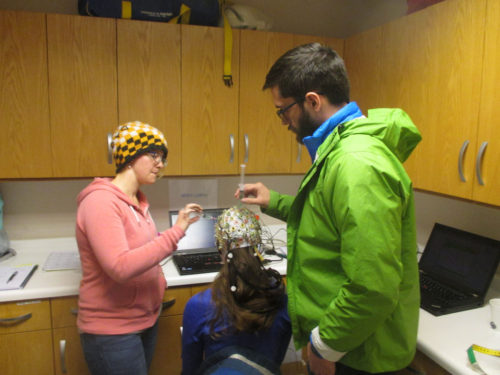
An international team of doctors and researchers conducted a study at ALMA to identify the consequences of working at high altitude where the body can experience oxygen deficiency, a medical condition known as hypoxia. The extreme altitude of the observatory -- 2,900 meters at the OSF and the AOS at 5,000 meters -- makes it a natural laboratory for this type of research, which is extremely useful to both ALMA and other operations at high altitudes. Credit: Iván López - ALMA (NRAO/NAOJ/ESO)
“We are very happy about this study, as it gives us an objective database of the effects of hypoxia in workers and helps adapt the risk prevention program to real conditions, in order to improve the quality of life of all staff,” says Iván López, ALMA Risk Prevention, Health, Environment and Safety Manager.
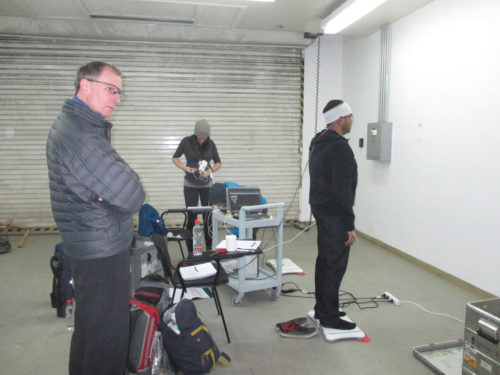
An international team of doctors and researchers conducted a study at ALMA to identify the consequences of working at high altitude where the body can experience oxygen deficiency, a medical condition known as hypoxia. The extreme altitude of the observatory -- 2,900 meters at the OSF and the AOS at 5,000 meters -- makes it a natural laboratory for this type of research, which is extremely useful to both ALMA and other operations at high altitudes. Credit: Iván López - ALMA (NRAO/NAOJ/ESO)
Early results from these studies suggest that intermittent and/or regular exposure to high altitudes may have a negative effect on psychomotor alertness, which is especially evident in those who work on tasks that require a high level of concentration, such as those found in mining and astronomical observatories. It also has bearing on athletes performing at high altitude.
These studies also indicate that there is an alteration in workers' sleep quality, although acclimatization would reduce these effects after a few days of exposure. Cognitive abilities would also be affected at extreme altitude exposure (5,050 meters above sea level), especially cognitive abilities and, to a much lesser extent, executive capacity. These effects would also be partially reduced as workers are acclimatized after a few days.
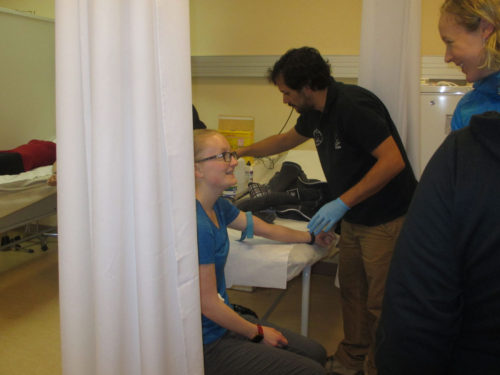
An international team of doctors and researchers conducted a study at ALMA to identify the consequences of working at high altitude where the body can experience oxygen deficiency, a medical condition known as hypoxia. The extreme altitude of the observatory -- 2,900 meters at the OSF and the AOS at 5,000 meters -- makes it a natural laboratory for this type of research, which is extremely useful to both ALMA and other operations at high altitudes. Credit: Iván López - ALMA (NRAO/NAOJ/ESO)
Among the measures taken by ALMA to reduce the effects of hypoxia are the mandatory use of portable medical oxygen for all workers performing tasks over an altitude of 3000 meters, permanent oxygenation of the technical building located at an altitude of 5000 meters, and constant on-site monitoring by the observatory's medical team. In addition, new strategies are being developed that include a special diet and exercise program.
Links
Contacts
-
Nicolás Lira
Education and Public Outreach OfficerJoint ALMA Observatory, Santiago - ChilePhone: +56 2 2467 6519Cel: +56 9 9445 7726Email: [email protected]
